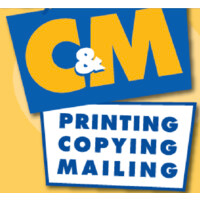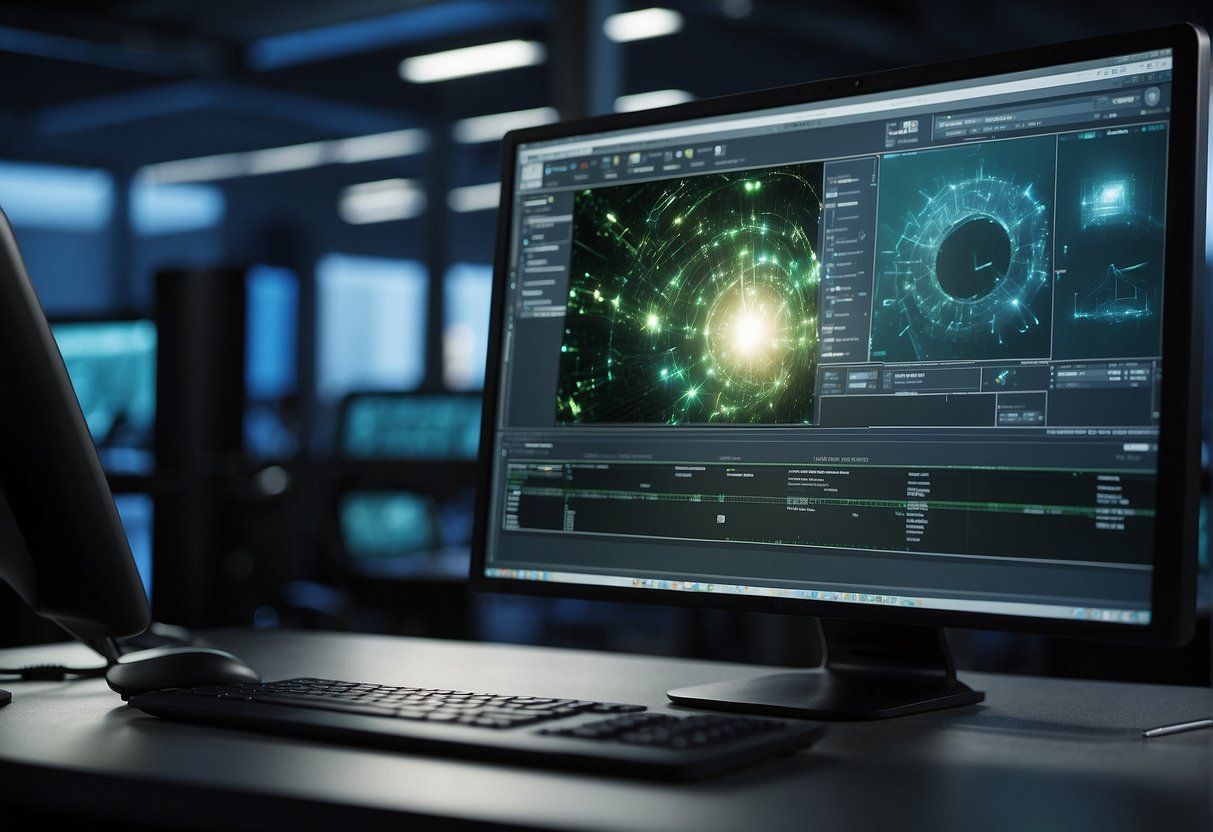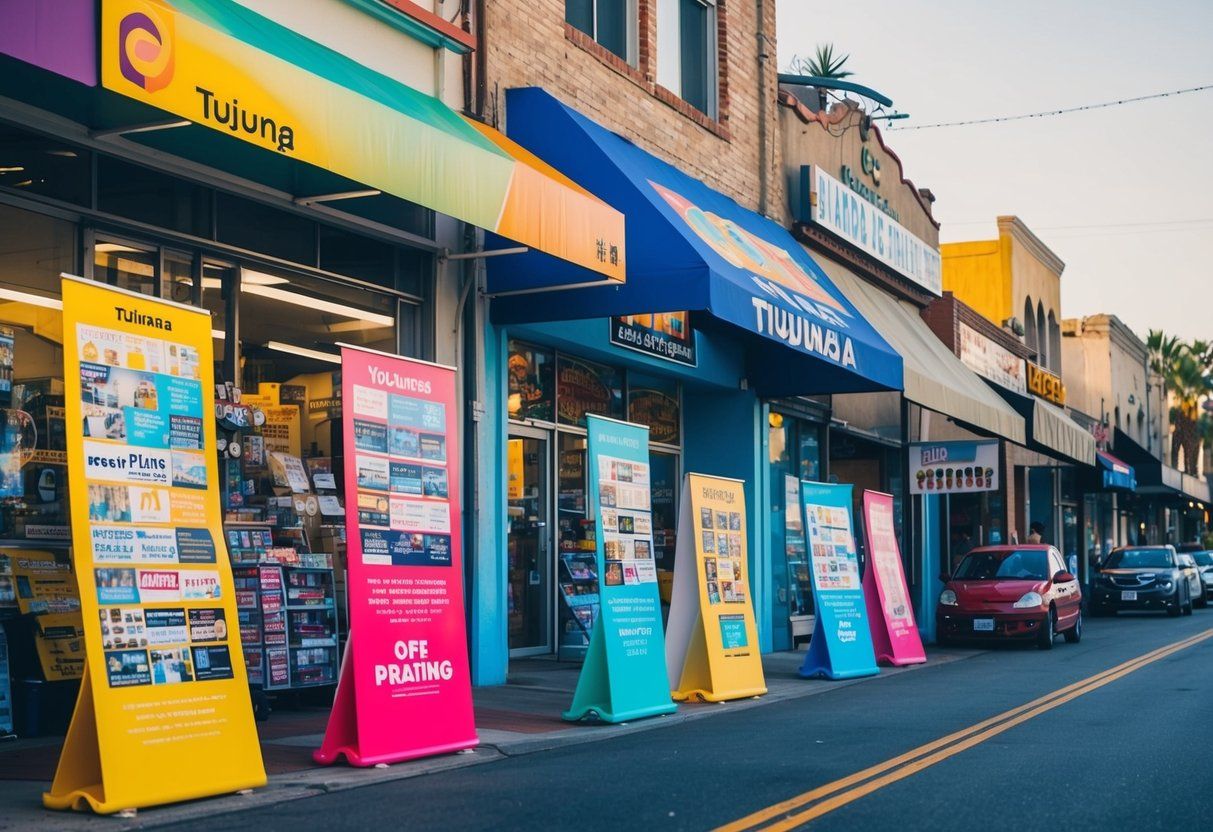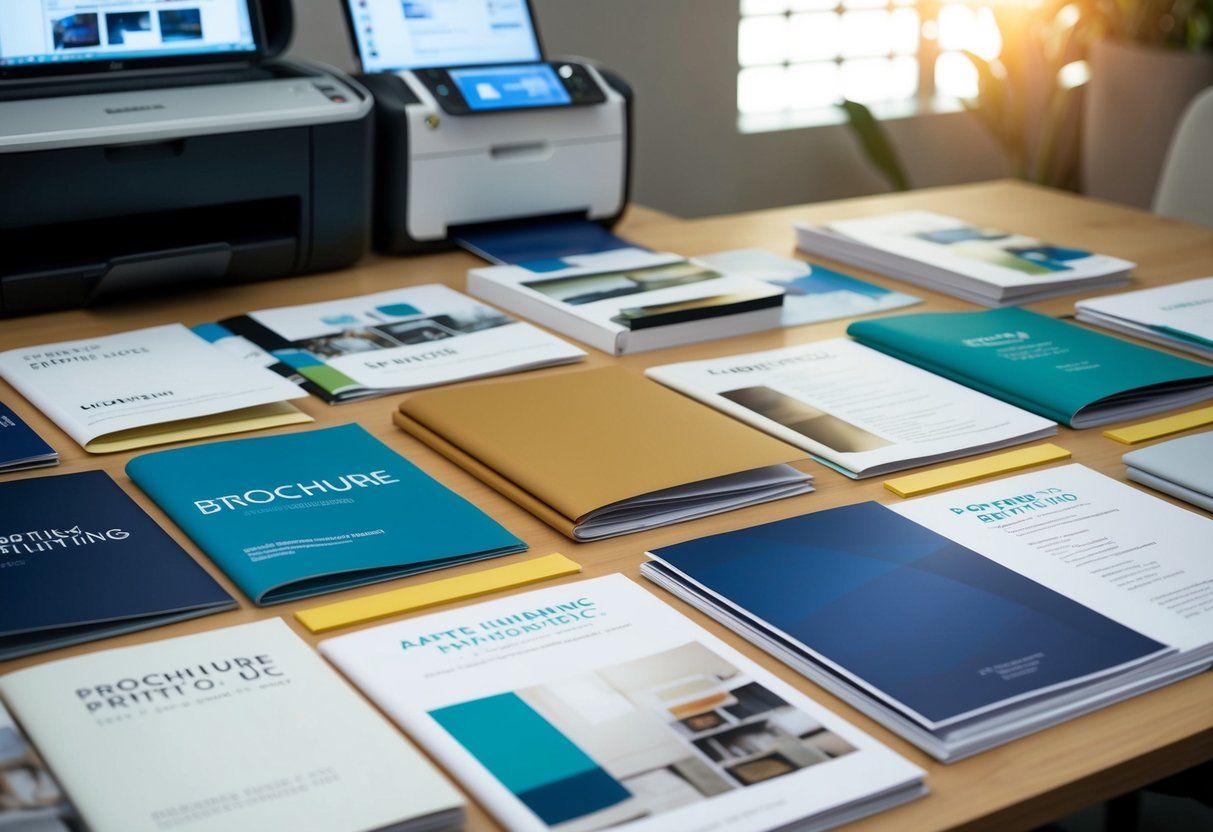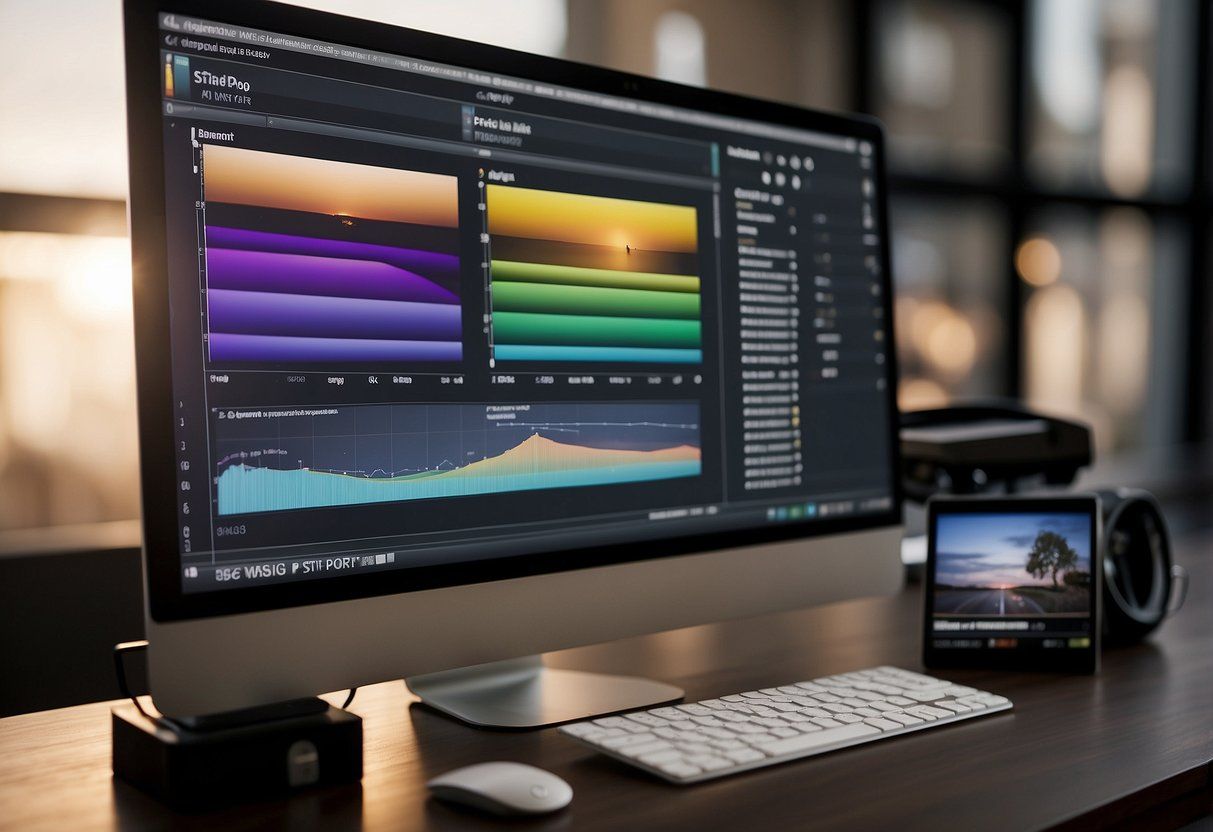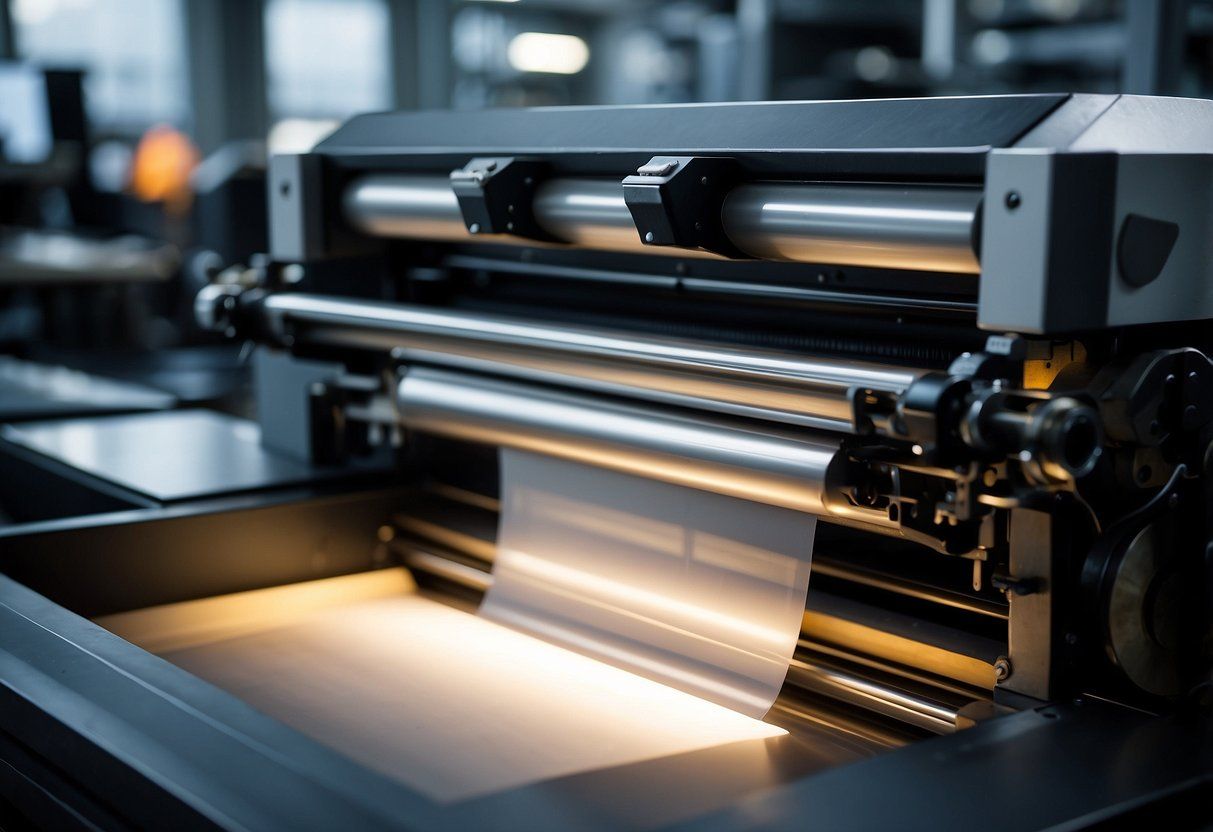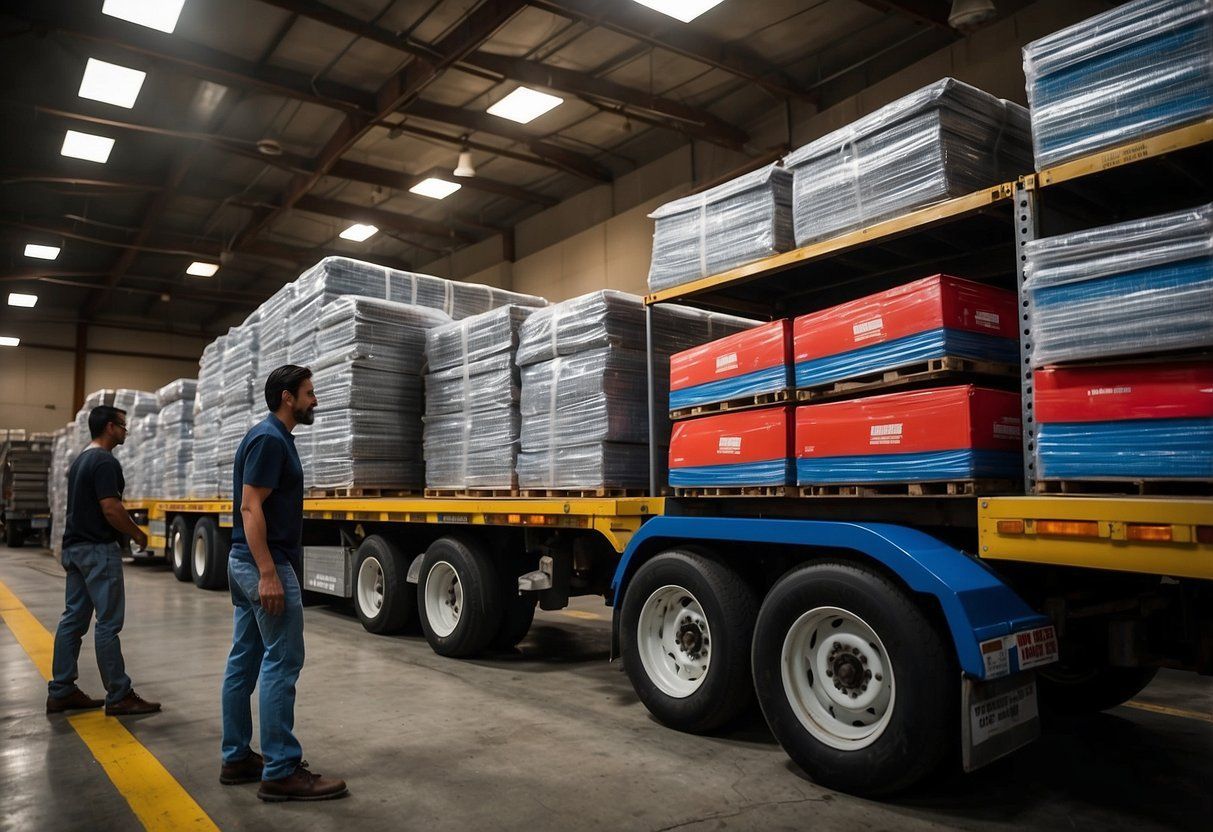Los Angeles, CA Printing Services
Local Printing Leads By Leadlane
Sunland, CA Apparel Printing
Los Angeles, CA Apparel Printing
Kagel Canyon, CA Apparel Printing
Shadow Hills, CA Apparel Printing
La Crescenta-Montrose, CA Apparel Printing
Verdugo City, CA Apparel Printing
La Cañada Flintridge, CA Apparel Printing
Sun Valley, CA Apparel Printing
Glendale, CA Apparel Printing
Burbank, CA Apparel Printing
North Hollywood (NoHo), CA Apparel Printing
Studio City, CA Apparel Printing
Valley Village, CA Apparel Printing
Toluca Lake, CA Apparel Printing
Pasadena, CA Apparel Printing
Sherman Oaks, CA Apparel Printing
Encino, CA Apparel Printing
Reseda, CA Apparel Printing
Tarzana, CA Apparel Printing
Northridge, CA Apparel Printing
Montebello, CA Apparel Printing
Woodland Hills, CA Apparel Printing
Baldwin Park, CA Apparel Printing
Granada Hills, CA Apparel Printing
West Hills, CA Apparel Printing
Downey, CA Apparel Printing
Pico Rivera, CA Apparel Printing
Huntington Park, CA Apparel Printing
South Gate, CA Apparel Printing
Chatsworth, CA Apparel Printing
Porter Ranch, CA Apparel Printing
West Covina, CA Apparel Printing
Inglewood, CA Apparel Printing
Santa Monica, CA Apparel Printing
Whittier, CA Apparel Printing
Tujunga, CA Apparel Printing
[City Name], [Service] Printing
Los Angeles, CA Promotional Items Printing
Kagel Canyon, CA Promotional Items Printing
Shadow Hills, CA Promotional Items Printing
La Crescenta-Montrose, CA Promotional Items Printing
Verdugo City, CA Promotional Items Printing
La Cañada Flintridge, CA Promotional Items Printing
Sun Valley, CA Promotional Items Printing
Glendale, CA Promotional Items Printing
Burbank, CA Promotional Items Printing
North Hollywood (NoHo), CA Promotional Items Printing
Studio City, CA Promotional Items Printing
Valley Village, CA Promotional Items Printing
Toluca Lake, CA Promotional Items Printing
Pasadena, CA Promotional Items Printing
Sherman Oaks, CA Promotional Items Printing
Encino, CA Promotional Items Printing
Reseda, CA Promotional Items Printing
Tarzana, CA Promotional Items Printing
Northridge, CA Promotional Items Printing
Montebello, CA Promotional Items Printing
Woodland Hills, CA Promotional Items Printing
Baldwin Park, CA Promotional Items Printing
Granada Hills, CA Promotional Items Printing
West Hills, CA Promotional Items Printing
Downey, CA Promotional Items Printing
Pico Rivera, CA Promotional Items Printing
Huntington Park, CA Promotional Items Printing
South Gate, CA Promotional Items Printing
Chatsworth, CA Promotional Items Printing
Porter Ranch, CA Promotional Items Printing
West Covina, CA Promotional Items Printing
Inglewood, CA Promotional Items Printing
Santa Monica, CA Promotional Items Printing
Whittier, CA Promotional Items Printing
Tujunga, CA Promotional Items Printing
Sunland, CA Digital Printing
Los Angeles, CA Digital Printing
Kagel Canyon, CA Digital Printing
Shadow Hills, CA Digital Printing
La Crescenta-Montrose, CA Digital Printing
Verdugo City, CA Digital Printing
La Cañada Flintridge, CA Digital Printing
Sun Valley, CA Digital Printing
Glendale, CA Digital Printing
Burbank, CA Digital Printing
North Hollywood, CA Digital Printing
Studio City, CA Digital Printing
Valley Village, CA Digital Printing
Toluca Lake, CA Digital Printing
Pasadena, CA Digital Printing
Sherman Oaks, CA Digital Printing
Encino, CA Digital Printing
Reseda, CA Digital Printing
Tarzana, CA Digital Printing
Northridge, CA Digital Printing
Montebello, CA Digital Printing
Woodland Hills, CA Digital Printing
Baldwin Park, CA Digital Printing
Granada Hills, CA Digital Printing
West Hills, CA Digital Printing
Downey, CA Digital Printing
Pico Rivera, CA Digital Printing
Huntington Park, CA Digital Printing
South Gate, CA Digital Printing
Chatsworth, CA Digital Printing
Porter Ranch, CA Digital Printing
West Covina, CA Digital Printing
Inglewood, CA Digital Printing
Santa Monica, CA Digital Printing
Whittier, CA Digital Printing
Tujunga, CA Digital Printing
Sunland, CA Direct Mail Printing
Los Angeles, CA Direct Mail
Kagel Canyon, CA Direct Mail Printing
Shadow Hills, CA Direct Mail Printing
La Crescenta-Montrose, CA Direct Mail Printing
Verdugo City, CA Direct Mail Printing
La Cañada Flintridge, CA Direct Mail
Sun Valley, CA Direct Mail Printing
Glendale, CA Direct Mail
Burbank, CA Direct Mail Printing
North Hollywood, CA Direct Mail Printing
Studio City, CA Direct Mail Printing
Valley Village, CA Direct Mail Printing
Toluca Lake, CA Direct Mail Printing
Pasadena, CA Direct Mail Printing
Sherman Oaks, CA Direct Mail Printing
Encino, CA Direct Mail Printing
Reseda, CA Direct Mail Printing
Tarzana, CA Direct Mail Printing
Northridge, CA Direct Mail Printing
Montebello, CA Direct Mail Printing
Woodland Hills, CA Direct Mail Printing
Baldwin Park, CA Direct Mail Printing
Granada Hills, CA Direct Mail Printing
West Hills, CA Direct Mail Printing
Downey, CA Direct Mail Printing
Pico Rivera, CA Direct Mail Printing
Huntington Park, CA Direct Mail Printing
South Gate, CA Direct Mail Printing
Chatsworth, CA Direct Mail Printing
Porter Ranch, CA Direct Mail Printing
West Covina, CA Direct Mail Printing
Inglewood, CA Direct Mail Printing
Santa Monica, CA Direct Mail
Whittier, CA Direct Mail Printing
Tujunga, CA Direct Mail Printing
Sunland, CA Banner Printing
Los Angeles, CA Banner Printing
Kagel Canyon, CA Banner Printing
Shadow Hills, CA Banner Printing
La Crescenta-Montrose, CA Banner Printing
Verdugo City, CA Banner Printing
La Cañada Flintridge, CA Banner Printing
Sun Valley, CA Banner Printing
Glendale, CA Banner Printing
Burbank, CA Banner Printing
North Hollywood, CA Banner Printing
Studio City, CA Banner Printing
Valley Village, CA Banner Printing
Toluca Lake, CA Banner Printing
Pasadena, CA Banner Printing
Sherman Oaks, CA Banner Printing
Encino, CA Banner Printing
Reseda, CA Banner Printing
Tarzana, CA Banner Printing
Northridge, CA Banner Printing
Montebello, CA Banner Printing
Woodland Hills, CA Banner Printing
Baldwin Park, CA Banner Printing
Granada Hills, CA Banner Printing
West Hills, CA Banner Printing
Downey, CA Banner Printing
Pico Rivera, CA Banner Printing
Huntington Park, CA Banner Printing
South Gate, CA Banner Printing
Chatsworth, CA Banner Printing
Porter Ranch, CA Banner Printing
West Covina, CA Banner Printing
Inglewood, CA Banner Printing
Santa Monica, CA Banner Printing
Whittier, CA Banner Printing
Tujunga, CA Banner Printing
Sunland, CA Book Binding
Los Angeles, CA Book Binding
Kagel Canyon, CA Book Binding
Shadow Hills, CA Book Binding
La Crescenta-Montrose, CA Book Binding
Verdugo City, CA Book Binding
La Cañada Flintridge, CA Book Binding
Sun Valley, CA Book Binding
Glendale, CA Book Binding
Burbank, CA Book Binding
North Hollywood (NoHo), CA Book Binding
Studio City, CA Book Binding
Valley Village, CA Book Binding
Toluca Lake, CA Book Binding
Pasadena, CA Book Binding
Sherman Oaks, CA Book Binding
Encino, CA Book Binding
Reseda, CA Book Binding
Tarzana, CA Book Binding
Northridge, CA Book Binding
Montebello, CA Book Binding
Woodland Hills, CA Book Binding
Baldwin Park, CA Book Binding
Granada Hills, CA Book Binding
West Hills, CA Book Binding
Downey, CA Book Binding
Pico Rivera, CA Book Binding
Huntington Park, CA Book Binding
South Gate, CA Book Binding
Chatsworth, CA Book Binding
Porter Ranch, CA Book Binding
West Covina, CA Book Binding
Inglewood, CA Book Binding
Santa Monica, CA Book Binding
Whittier, CA Book Binding
Tujunga, CA Book Binding
Sunland, CA Booklet Printing
Los Angeles, CA Booklet Printing
Kagel Canyon, CA Booklet Printing
Shadow Hills, CA Booklet Printing
La Crescenta Montrose Booklet Printing
Verdugo City, CA Booklet Printing
La Cañada Flintridge Booklet Printing
Sun Valley, CA Booklet Printing
Glendale, CA Booklet Printing
Burbank, CA Booklet Printing
North Hollywood (NoHo) Booklet Printing
Studio City, CA Booklet Printing
Valley Village, CA Booklet Printing
Toluca Lake, CA Booklet Printing
Pasadena, CA Booklet Printing
Sherman Oaks, CA Booklet Printing
Encino, CA Booklet Printing
Reseda, CA Booklet Printing
Tarzana, CA Booklet Printing
Northridge, CA Booklet Printing
Montebello, CA Booklet Printing
Woodland Hills, CA Booklet Printing
Baldwin Park, CA Booklet Printing
Granada Hills, CA Booklet Printing
West Hills Booklet Printing
Downey, CA Booklet Printing
Pico Rivera, CA Booklet Printing
Huntington Park, CA Booklet Printing
South Gate, CA Booklet Printing
Chatsworth, CA Booklet Printing
Porter Ranch, CA Booklet Printing
West Covina, CA Booklet Printing
Inglewood, CA Booklet Printing
Santa Monica, CA Booklet Printing
Whittier, CA Booklet Printing
Tujunga, CA Booklet Printing
Sunland, CA Brochure Printing
Los Angeles, CA Brochure Printing
Kagel Canyon, CA Brochure Printing
Riverwood Ranch, CA Brochure Printing
Tujunga Canyons, CA Brochure Printing
Verdugo Mountains, CA Brochure Printing
Shadow Hills, CA Brochure Printing
Foothill Trails, CA Brochure Printing
La Tuna Canyon, CA Brochure Printing
Lake View Terrace, CA Brochure Printing
Sun Valley Hills, CA Brochure Printing
La Crescenta-Montrose, CA Brochure Printing
Verdugo City, CA Brochure Printing
Crescenta Highlands, CA Brochure Printing
Briggs Terrace, CA Brochure Printing
Whiting Woods, CA Brochure Printing
Sun Valley, CA Brochure Printing
North Glendale, CA Brochure Printing
Stonehurst, CA Brochure Printing
Chevy Chase Canyon, CA Brochure Printing
Montrose, CA Brochure Printing
Sparr Heights, CA Brochure Printing
Oakmont, CA Brochure Printing
Brookmere, CA Brochure Printing
Burbank, CA Brochure Printing
La Cañada Flintridge, CA Brochure Printing
Hansen Hills, CA Brochure Printing
Glenoaks Canyon, CA Brochure Printing
Bradbury, CA Brochure Printing
Sierra Madre, CA Brochure Printing
Duarte, CA Brochure Printing
Flintridge, CA Brochure Printing
Kinneloa Mesa, CA Brochure Printing
La Cañada Highlands, CA Brochure Printing
Toluca Lake, CA Brochure Printing
San Fernando, CA Brochure Printing
Rancho San Rafael, CA Brochure Printing
Glendale, CA Brochure Printing
Eagle Rock, CA Brochure Printing
Glassell Park, CA Brochure Printing
Studio City, CA Brochure Printing
North Hollywood, CA Brochure Printing
Valley Glen, CA Brochure Printing
Highland Park, CA Brochure Printing
Atwater Village, CA Brochure Printing
Valley Village, CA Brochure Printing
Mount Washington, CA Brochure Printing
Pacoima, CA Brochure Printing
Altadena, CA Brochure Printing
South Pasadena, CA Brochure Printing
San Marino, CA Brochure Printing
Pasadena, CA Brochure Printing
Sherman Oaks, CA Brochure Printing
Arleta, CA Brochure Printing
Panorama City, CA Brochure Printing
Arcadia, CA Brochure Printing
Irwindale, CA Brochure Printing
San Gabriel, CA Brochure Printing
Temple City, CA Brochure Printing
Rosemead, CA Brochure Printing
Alhambra, CA Brochure Printing
Encino, CA Brochure Printing
Sylmar, CA Brochure Printing
Monrovia, CA Brochure Printing
El Monte, CA Brochure Printing
Reseda, CA Brochure Printing
Winnetka, CA Brochure Printing
Tarzana, CA Brochure Printing
Northridge, CA Brochure Printing
Canoga Park, CA Brochure Printing
Montebello, CA Brochure Printing
Woodland Hills, CA Brochure Printing
Baldwin Park, CA Brochure Printing
Granada Hills, CA Brochure Printing
West Hills, CA Brochure Printing
Downey, CA Brochure Printing
Pico Rivera, CA Brochure Printing
Huntington Park, CA Brochure Printing
South Gate, CA Brochure Printing
Chatsworth, CA Brochure Printing
Porter Ranch, CA Brochure Printing
West Covina, CA Brochure Printing
Inglewood, CA Brochure Printing
Santa Monica, CA Brochure Printing
Whittier, CA Brochure Printing
Tujunga, CA Brochure Printing
Sunland, CA Business Card Printing
Los Angeles, CA Business Card Printing
Kagel Canyon, CA Business Card Printing
Shadow Hills, CA Business Card Printing
La Crescenta-Montrose, CA Business Card Printing
Verdugo City, CA Business Card Printing
La Cañada Flintridge, CA Business Card Printing
Sun Valley, CA Business Card Printing
Glendale, CA Business Card Printing
Burbank, CA Business Card Printing
North Hollywood, CA Business Card Printing
Studio City, CA Business Card Printing
Valley Village, CA Business Card Printing
Toluca Lake, CA Business Card Printing
Pasadena, CA Business Card Printing
Sherman Oaks, CA Business Card Printing
Encino, CA Business Card Printing
Reseda, CA Business Card Printing
Tarzana, CA Business Card Printing
Northridge, CA Business Card Printing
Montebello, CA Business Card Printing
Woodland Hills, CA Business Card Printing
Baldwin Park, CA Business Card Printing
Granada Hills, CA Business Card Printing
West Hills, CA Business Card Printing
Downey, CA Business Card Printing
Pico Rivera, CA Business Card Printing
Huntington Park, CA Business Card Printing
South Gate, CA Business Card Printing
Chatsworth, CA Business Card Printing
Porter Ranch, CA Business Card Printing
West Covina, CA Business Card Printing
Inglewood, CA Business Card Printing
Santa Monica, CA Business Card Printing
Whittier, CA Business Card Printing
Tujunga, CA Business Card Printing
Los Angeles Catalog Printing, Sunland, CA
Los Angeles, CA Catalog Printing
Kagel Canyon, CA Catalog Printing
Shadow Hills, CA Catalog Printing
La Crescenta-Montrose, CA Catalog Printing
Verdugo City, CA Catalog Printing
La Cañada Flintridge, CA Catalog Printing
Sun Valley, CA Catalog Printing
Glendale, CA Catalog Printing
Burbank, CA Catalog Printing
North Hollywood, CA Catalog Printing
Studio City, CA Catalog Printing
Valley Village, CA Catalog Printing
Toluca Lake, CA Catalog Printing
Pasadena, CA Catalog Printing
Sherman Oaks, CA Catalog Printing
Encino, CA Catalog Printing
Reseda, CA Catalog Printing
Tarzana, CA Catalog Printing
Northridge, CA Catalog Printing
Montebello, CA Catalog Printing
Woodland Hills, CA Catalog Printing
Baldwin Park, CA Catalog Printing
Granada Hills, CA Catalog Printing
West Hills, CA Catalog Printing
Downey, CA Catalog Printing
Pico Rivera, CA Catalog Printing
Huntington Park, CA Catalog Printing
South Gate, CA Catalog Printing
Chatsworth, CA Catalog Printing
Porter Ranch, CA Catalog Printing
West Covina, CA Catalog Printing
Inglewood, CA Catalog Printing
Santa Monica, CA Catalog Printing
Whittier, CA Catalog Printing
Tujunga, CA Catalog Printing
Sunland, CA Commercial Printing
Los Angeles, CA Commercial Printing
Kagel Canyon, CA Commercial Printing
Shadow Hills, CA Commercial Printing
La Crescenta-Montrose, CA Commercial Printing
Verdugo City, CA Commercial Printing
La Cañada Flintridge, CA Commercial Printing
Sun Valley, CA Commercial Printing
Glendale, CA Commercial Printing
Burbank, CA Commercial Printing
North Hollywood, CA Commercial Printing
Studio City, CA Commercial Printing
Valley Village, CA Commercial Printing
Toluca Lake, CA Commercial Printing
Pasadena, CA Commercial Printing
Sherman Oaks, CA Commercial Printing
Encino, CA Commercial Printing
Reseda, CA Commercial Printing
Tarzana, CA Commercial Printing
Northridge, CA Commercial Printing
Montebello, CA Commercial Printing
Woodland Hills, CA Commercial Printing
Baldwin Park, CA Commercial Printing
Granada Hills, CA Commercial Printing
West Hills, CA Commercial Printing
Downey, CA Commercial Printing
Pico Rivera, CA Commercial Printing
Huntington Park, CA Commercial Printing
South Gate, CA Commercial Printing
Chatsworth, CA Commercial Printing
Porter Ranch, CA Commercial Printing
West Covina, CA Commercial Printing
Inglewood, CA Commercial Printing
Santa Monica, CA Commercial Printing
Whittier, CA Commercial Printing
Tujunga, CA Commercial Printing
Sunland, CA Coroplast Signs Printing
Los Angeles, CA Coroplast Signs
Kagel Canyon, CA Coroplast Signs
Shadow Hills, CA Coroplast Signs
La Crescenta-Montrose, CA Coroplast Signs
Verdugo City, CA Coroplast Signs
La Cañada Flintridge, CA Coroplast Signs
Sun Valley, CA Coroplast Signs Printing
Glendale, CA Coroplast Signs
Burbank, CA Coroplast Signs
North Hollywood, CA Coroplast Signs
Studio City, CA Coroplast Signs
Valley Village, CA Coroplast Signs
Toluca Lake, CA Coroplast Signs
Pasadena, CA Coroplast Signs
Sherman Oaks, CA Coroplast Signs
Encino, CA Coroplast Signs
Reseda, CA Coroplast Signs
Tarzana, CA Coroplast Signs
Northridge, CA Coroplast Signs
Montebello, CA Coroplast Signs
Woodland Hills, CA Coroplast Signs
Baldwin Park, CA Coroplast Signs
Granada Hills, CA Coroplast Signs
West Hills, CA Coroplast Signs
Downey, CA Coroplast Signs
Pico Rivera, CA Coroplast Signs
Huntington Park, CA Coroplast Signs
South Gate, CA Coroplast Signs
Chatsworth, CA Coroplast Signs
Porter Ranch, CA Coroplast Signs
West Covina, CA Coroplast Signs
Inglewood, CA Coroplast Signs
Santa Monica, CA Coroplast Signs
Whittier, CA Coroplast Signs
Tujunga, CA Coroplast Signs
Sunland, CA Flyer Printing
Los Angeles, CA Flyer Printing
Kagel Canyon, CA Flyer Printing
Shadow Hills, CA Flyer Printing
La Crescenta-Montrose, CA Flyer Printing
Verdugo City, CA Flyer Printing
La Cañada Flintridge, CA Flyer Printing
Sun Valley, CA Flyer Printing
Glendale, CA Flyer Printing
Burbank, CA Flyer Printing
North Hollywood, CA Flyer Printing
Studio City, CA Flyer Printing
Valley Village, CA Flyer Printing
Toluca Lake, CA Flyer Printing
Pasadena, CA Flyer Printing
Sherman Oaks, CA Flyer Printing
Encino, CA Flyer Printing
Reseda, CA Flyer Printing
Tarzana, CA Flyer Printing
Northridge, CA Flyer Printing
Montebello, CA Flyer Printing
Woodland Hills, CA Flyer Printing
Baldwin Park, CA Flyer Printing
Granada Hills, CA Flyer Printing
West Hills, CA Flyer Printing
Downey, CA Flyer Printing
Pico Rivera, CA Flyer Printing
Huntington Park, CA Flyer Printing
South Gate, CA Flyer Printing
Chatsworth, CA Flyer Printing
Porter Ranch, CA Flyer Printing
West Covina, CA Flyer Printing
Inglewood, CA Flyer Printing
Santa Monica, CA Flyer Printing
Whittier, CA Flyer Printing
Tujunga, CA Flyer Printing
Sunland, CA Graphic Design
Los Angeles, CA Graphic Design
Kagel Canyon, CA Graphic Design
Shadow Hills, CA Graphic Design
La Crescenta-Montrose, CA Graphic Design
Verdugo City, CA Graphic Design
La Cañada Flintridge, CA Graphic Design
Sun Valley, CA Graphic Design
Glendale, CA Graphic Design
Burbank, CA Graphic Design
North Hollywood, CA Graphic Design
Studio City, CA Graphic Design
Valley Village, CA Graphic Design
Toluca Lake, CA Graphic Design
Pasadena, CA Graphic Design
Sherman Oaks, CA Graphic Design
Encino, CA Graphic Design
Reseda, CA Graphic Design
Tarzana, CA Graphic Design
Northridge, CA Graphic Design
Montebello, CA Graphic Design
Woodland Hills, CA Graphic Design
Baldwin Park, CA Graphic Design
Granada Hills, CA Graphic Design
West Hills, CA Graphic Design
Downey, CA Graphic Design
Pico Rivera, CA Graphic Design
Huntington Park, CA Graphic Design
South Gate, CA Graphic Design
Chatsworth, CA Graphic Design
Porter Ranch, CA Graphic Design
West Covina, CA Graphic Design
Inglewood, CA Graphic Design
Santa Monica, CA Graphic Design
Whittier, CA Graphic Design
Tujunga, CA Graphic Design
Sunland, CA Large Format Printing
Los Angeles, CA Large Format Printing
Kagel Canyon, CA Large Format Printing
Shadow Hills, CA Large Format Printing
La Crescenta-Montrose, CA Large Format Printing
Verdugo City, CA Large Format Printing
La Cañada Flintridge, CA Large Format Printing
Sun Valley, CA Large Format Printing
Glendale, CA Large Format Printing
Burbank, CA Large Format Printing
North Hollywood, CA Large Format Printing
Studio City, CA Large Format Printing
Valley Village, CA Large Format Printing
Toluca Lake, CA Large Format Printing
Pasadena, CA Large Format Printing
Sherman Oaks, CA Large Format Printing
Encino, CA Large Format Printing
Reseda, CA Large Format Printing
Tarzana, CA Large Format Printing
Northridge, CA Large Format Printing
Montebello, CA Large Format Printing
Woodland Hills, CA Large Format Printing
Baldwin Park, CA Large Format Printing
Granada Hills, CA Large Format Printing
West Hills, CA Large Format Printing
Downey, CA Large Format Printing
Pico Rivera, CA Large Format Printing
Huntington Park, CA Large Format Printing
South Gate, CA Large Format Printing
Chatsworth, CA Large Format Printing
Porter Ranch, CA Large Format Printing
West Covina, CA Large Format Printing
Inglewood, CA Large Format Printing
Santa Monica, CA Large Format Printing
Whittier, CA Large Format Printing
Tujunga, CA Large Format Printing
Sunland, CA Postcard Printing
Los Angeles, CA Postcard Printing
Kagel Canyon, CA Postcard Printing
Shadow Hills, CA Postcard Printing
La Crescenta-Montrose, CA Postcard Printing
Verdugo City, CA Postcard Printing
La Cañada Flintridge, CA Postcard Printing
Sun Valley, CA Postcard Printing
Glendale, CA Postcard Printing
Burbank, CA Postcard Printing
North Hollywood, CA Postcard Printing
Studio City, CA Postcard Printing
Valley Village, CA Postcard Printing
Toluca Lake, CA Postcard Printing
Pasadena, CA Postcard Printing
Sherman Oaks, CA Postcard Printing
Encino, CA Postcard Printing
Reseda, CA Postcard Printing
Tarzana, CA Postcard Printing
Northridge, CA Postcard Printing
Montebello, CA Postcard Printing
Woodland Hills, CA Postcard Printing
Baldwin Park, CA Postcard Printing
Granada Hills, CA Postcard Printing
West Hills, CA Postcard Printing
Downey, CA Postcard Printing
Pico Rivera, CA Postcard Printing
Huntington Park, CA Postcard Printing
South Gate, CA Postcard Printing
Chatsworth, CA Postcard Printing
Porter Ranch, CA Postcard Printing
West Covina, CA Postcard Printing
Inglewood, CA Postcard Printing
Santa Monica, CA Postcard Printing
Whittier, CA Postcard Printing
Tujunga, CA Postcard Printing
Sunland, CA Menu Printing
Los Angeles, CA Menu Printing
Kagel Canyon, CA Menu Printing
Shadow Hills, CA Menu Printing
La Crescenta-Montrose, CA Menu Printing
Verdugo City, CA Menu Printing
La Cañada Flintridge, CA Menu Printing
Sun Valley, CA Menu Printing
Glendale, CA Menu Printing
Burbank, CA Menu Printing
North Hollywood, CA Menu Printing
Studio City, CA Menu Printing
Valley Village, CA Menu Printing
Toluca Lake, CA Menu Printing
Pasadena, CA Menu Printing
Sherman Oaks, CA Menu Printing
Encino, CA Menu Printing
Reseda, CA Menu Printing
Tarzana, CA Menu Printing
Northridge, CA Menu Printing
Montebello, CA Menu Printing
Woodland Hills, CA Menu Printing
Baldwin Park, CA Menu Printing
Granada Hills, CA Menu Printing
West Hills, CA Menu Printing
Downey, CA Menu Printing
Pico Rivera, CA Menu Printing
Huntington Park, CA Menu Printing
South Gate, CA Menu Printing
Chatsworth, CA Menu Printing
Porter Ranch, CA Menu Printing
West Covina, CA Menu Printing
Inglewood, CA Menu Printing
Santa Monica, CA Menu Printing
Whittier, CA Menu Printing
Tujunga, CA Menu Printing
Sunland, CA Poster Printing
Los Angeles, CA Poster Printing
Kagel Canyon, CA Poster Printing
Shadow Hills, CA Poster Printing
La Crescenta-Montrose, CA Poster Printing
Verdugo City, CA Poster Printing
La Cañada Flintridge, CA Poster Printing
Sun Valley, CA Poster Printing
Glendale, CA Poster Printing
Burbank, CA Poster Printing
North Hollywood, CA Poster Printing
Studio City, CA Poster Printing
Valley Village, CA Poster Printing
Toluca Lake, CA Poster Printing
Pasadena, CA Poster Printing
Sherman Oaks, CA Poster Printing
Encino, CA Poster Printing
Reseda, CA Poster Printing
Tarzana, CA Poster Printing
Northridge, CA Poster Printing
Montebello, CA Poster Printing
Woodland Hills, CA Poster Printing
Baldwin Park, CA Poster Printing
Granada Hills, CA Poster Printing
West Hills, CA Poster Printing
Downey, CA Poster Printing
Pico Rivera, CA Poster Printing
Huntington Park, CA Poster Printing
South Gate, CA Poster Printing
Chatsworth, CA Poster Printing
Porter Ranch, CA Poster Printing
West Covina, CA Poster Printing
Inglewood, CA Poster Printing
Santa Monica, CA Poster Printing
Whittier, CA Poster Printing
Tujunga, CA Poster Printing
Sunland, CA Screen Printing
Los Angeles, CA Screen Printing
Kagel Canyon, CA Screen Printing
Shadow Hills, CA Screen Printing
La Crescenta-Montrose, CA Screen Printing
Verdugo City, CA Screen Printing
La Cañada Flintridge, CA Screen Printing
Sun Valley, CA Screen Printing
Glendale, CA Screen Printing
Burbank, CA Screen Printing
North Hollywood, CA Screen Printing
Studio City, CA Screen Printing
Valley Village, CA Screen Printing
Toluca Lake, CA Screen Printing
Pasadena, CA Screen Printing
Sherman Oaks, CA Screen Printing
Encino, CA Screen Printing
Reseda, CA Screen Printing
Tarzana, CA Screen Printing
Northridge, CA Screen Printing
Montebello, CA Screen Printing
Woodland Hills, CA Screen Printing
Baldwin Park, CA Screen Printing
Granada Hills, CA Screen Printing
West Hills, CA Screen Printing
Downey, CA Screen Printing
Pico Rivera, CA Screen Printing
Huntington Park, CA Screen Printing
South Gate, CA Screen Printing
Chatsworth, CA Screen Printing
Porter Ranch, CA Screen Printing
West Covina, CA Screen Printing
Inglewood, CA Screen Printing
Santa Monica, CA Screen Printing
Whittier, CA Screen Printing
Tujunga, CA Screen Printing
Sunland, CA Sticker Printing
Los Angeles, CA Sticker Printing
Kagel Canyon, CA Sticker Printing
Shadow Hills, CA Sticker Printing
La Crescenta-Montrose, CA Sticker Printing
Verdugo City, CA Sticker Printing
La Cañada Flintridge, CA Sticker Printing
Sun Valley, CA Sticker Printing
Glendale, CA Sticker Printing
Burbank, CA Sticker Printing
North Hollywood, CA Sticker Printing
Studio City, CA Sticker Printing
Valley Village, CA Sticker Printing
Toluca Lake, CA Sticker Printing
Pasadena, CA Sticker Printing
Sherman Oaks, CA Sticker Printing
Encino, CA Sticker Printing
Reseda, CA Sticker Printing
Tarzana, CA Sticker Printing
Northridge, CA Sticker Printing
Montebello, CA Sticker Printing
Woodland Hills, CA Sticker Printing
Baldwin Park, CA Sticker Printing
Granada Hills, CA Sticker Printing
West Hills, CA Sticker Printing
Downey, CA Sticker Printing
Pico Rivera, CA Sticker Printing
Huntington Park, CA Sticker Printing
South Gate, CA Sticker Printing
Chatsworth, CA Sticker Printing
Porter Ranch, CA Sticker Printing
West Covina, CA Sticker Printing
Inglewood, CA Sticker Printing
Santa Monica, CA Sticker Printing
Whittier, CA Sticker Printing
Tujunga, CA Sticker Printing
Sunland, CA Yard Signs Printing
Los Angeles, CA Yard Signs Printing
Kagel Canyon, CA Yard Signs
Shadow Hills, CA Yard Signs Printing
La Crescenta-Montrose, CA Yard Signs
Verdugo City, CA Yard Signs Printing
La Cañada Flintridge, CA Yard Signs
Sun Valley, CA Yard Signs Printing
Glendale, CA Yard Signs
Burbank, CA Yard Signs
North Hollywood, CA Yard Signs
Studio City, CA Yard Signs
Valley Village, CA Yard Signs
Toluca Lake, CA Yard Signs
Pasadena, CA Yard Signs Printing
Sherman Oaks, CA Yard Signs Printing
Encino, CA Yard Signs
Reseda, CA Yard Signs
Tarzana, CA Yard Signs
Northridge, CA Yard Signs
Montebello, CA Yard Signs
Woodland Hills, CA Yard Signs
Baldwin Park, CA Yard Signs
Granada Hills, CA Yard Signs
West Hills, CA Yard Signs
Downey, CA Yard Signs Printing
Pico Rivera, CA Yard Signs
Huntington Park, CA Yard Signs
South Gate, CA Yard Signs
Chatsworth, CA Yard Signs
Porter Ranch, CA Yard Signs
West Covina, CA Yard Signs
Inglewood, CA Yard Signs
Santa Monica, CA Yard Signs
Whittier, CA Yard Signs Printing
Tujunga, CA Yard Signs
Los Angeles, CA Printing Services
Los Angeles, CA Printing Services
Los Angeles, CA Printing Services
Los Angeles, CA Printing Reviews
Sunland, CA Printing Services
Los Angeles, CA Printing Services
Kagel Canyon, CA Printing Services
Shadow Hills, CA Printing Services
La Crescenta-Montrose, CA Printing Services
Verdugo City, CA Printing Services
La Cañada Flintridge, CA Printing Services
Sun Valley, CA Printing Services
Glendale, CA Print Shop
Burbank, CA Print Shop
North Hollywood, CA Printing Services
Studio City, CA Printing Services
Valley Village, CA Printing Services
Toluca Lake, CA Print Shop
Pasadena, CA Print Shop
Sherman Oaks, CA Print Shop
Encino, CA Print Shop
Reseda, CA Print Shop
Tarzana, CA Print Shop
Northridge, CA Print Shop
Montebello, CA Print Shop
Woodland Hills, CA Print Shop
Baldwin Park, CA Print Shop
Granada Hills, CA Print Shop
West Hills, CA Print Shop
Downey, CA Print Shop
Pico Rivera, CA Print Shop
Huntington Park, CA Printing Services
South Gate, CA Print Shop
Chatsworth, CA Print Shop
Porter Ranch, CA Printing Services
West Covina, CA Printing Services
Inglewood, CA Print Shop
Santa Monica, CA Print Shop
Whittier, CA Print Shop
Tujunga, CA Printing Services
Sunland, CA Construction Documents and Blueprints
Los Angeles, CA Construction Documents and Blueprints
Kagel Canyon, CA Construction Documents and Blueprints
Shadow Hills, CA Construction Documents and Blueprints
La Crescenta-Montrose, CA Construction Documents and Blueprints
Verdugo City, CA Construction Documents and Blueprints
La Cañada Flintridge, CA Construction Documents and Blueprints
Sun Valley, CA Construction Documents and Blueprints
Glendale, CA Construction Documents and Blueprints
Burbank, CA Construction Documents and Blueprints
North Hollywood, CA Construction Documents and Blueprints
Studio City, CA Construction Documents and Blueprints
Valley Village, CA Construction Documents and Blueprints
Toluca Lake, CA Construction Documents and Blueprints
Pasadena, CA Construction Documents and Blueprints
Sherman Oaks, CA Construction Documents and Blueprints
Encino, CA Construction Documents and Blueprints
Reseda, CA Construction Documents and Blueprints
Tarzana, CA Construction Documents and Blueprints
Northridge, CA Construction Documents and Blueprints
Montebello, CA Construction Documents and Blueprints
Woodland Hills, CA Construction Documents and Blueprints
Baldwin Park, CA Construction Documents and Blueprints
Granada Hills, CA Construction Documents and Blueprints
West Hills, CA Construction Documents and Blueprints
Downey, CA Construction Documents and Blueprints
Pico Rivera, CA Construction Documents and Blueprints
Huntington Park, CA Construction Documents and Blueprints
South Gate, CA Construction Documents and Blueprints
Chatsworth, CA Construction Documents and Blueprints
Porter Ranch, CA Construction Documents and Blueprints
West Covina, CA Construction Documents and Blueprints
Inglewood, CA Construction Documents and Blueprints
Santa Monica, CA Construction Documents and Blueprints
Whittier, CA Construction Documents and Blueprints
Tujunga, CA Construction Documents and Blueprints
Los Angeles, CA Printing Services
Sunland, CA Calendar Printing
Los Angeles, CA Calendar Printing
Kagel Canyon, CA Calendar Printing
Riverwood Ranch, CA Calendar Printing
Tujunga Canyons, CA Calendar Printing
Verdugo Mountains, CA Calendar Printing
Shadow Hills, CA Calendar Printing
Foothill Trails, CA Calendar Printing
La Tuna Canyon, CA Calendar Printing
Lake View Terrace, CA Calendar Printing
Sun Valley Hills, CA Calendar Printing
La Crescenta-Montrose, CA Calendar Printing
Verdugo City, CA Calendar Printing
Crescenta Highlands, CA Calendar Printing
Briggs Terrace, CA Calendar Printing
Whiting Woods, CA Calendar Printing
Sun Valley, CA Calendar Printing
North Glendale, CA Calendar Printing
Stonehurst, CA Calendar Printing
Chevy Chase Canyon, CA Calendar Printing
Montrose, CA Calendar Printing
Sparr Heights, CA Calendar Printing
Oakmont, CA Calendar Printing
Brookmere, CA Calendar Printing
Burbank, CA Calendar Printing
La Cañada Flintridge, CA Calendar Printing
Hansen Hills, CA Calendar Printing
Glenoaks Canyon, CA Calendar Printing
Bradbury, CA Calendar Printing
Sierra Madre, CA Calendar Printing
Duarte, CA Calendar Printing
Flintridge, CA Calendar Printing
Kinneloa Mesa, CA Calendar Printing
La Cañada Highlands, CA Calendar Printing
Toluca Lake, CA Calendar Printing
San Fernando, CA Calendar Printing
Rancho San Rafael, CA Calendar Printing
Glendale, CA Calendar Printing
Eagle Rock, CA Calendar Printing
Glassell Park, CA Calendar Printing
Studio City, CA Calendar Printing
North Hollywood, CA Calendar Printing
Valley Glen, CA Calendar Printing
Highland Park, CA Calendar Printing
Atwater Village, CA Calendar Printing
Valley Village, CA Calendar Printing
Mount Washington, CA Calendar Printing
Pacoima, CA Calendar Printing
Altadena, CA Calendar Printing
South Pasadena, CA Calendar Printing
San Marino, CA Calendar Printing
Pasadena, CA Calendar Printing
Sherman Oaks, CA Calendar Printing
Arleta, CA Calendar Printing
Panorama City, CA Calendar Printing
Arcadia, CA Calendar Printing
Irwindale, CA Calendar Printing
San Gabriel, CA Calendar Printing
Temple City, CA Calendar Printing
Rosemead, CA Calendar Printing
Alhambra, CA Calendar Printing
Encino, CA Calendar Printing
Sylmar, CA Calendar Printing
Monrovia, CA Calendar Printing
El Monte, CA Calendar Printing
Reseda, CA Calendar Printing
Winnetka, CA Calendar Printing
Tarzana, CA Calendar Printing
Northridge, CA Calendar Printing
Canoga Park, CA Calendar Printing
Montebello, CA Calendar Printing
Woodland Hills, CA Calendar Printing
Baldwin Park, CA Calendar Printing
Granada Hills, CA Calendar Printing
West Hills, CA Calendar Printing
Downey, CA Calendar Printing
Pico Rivera, CA Calendar Printing
Huntington Park, CA Calendar Printing
South Gate, CA Calendar Printing
Chatsworth, CA Calendar Printing
Porter Ranch, CA Calendar Printing
West Covina, CA Calendar Printing
Inglewood, CA Calendar Printing
Santa Monica, CA Calendar Printing
Whittier, CA Calendar Printing
Tujunga, CA Calendar Printing
Sunland, CA Rack Card Printing
Los Angeles, CA Rack Card Printing
Kagel Canyon, CA Rack Card Printing
Riverwood Ranch, CA Rack Card Printing
Tujunga Canyons, CA Rack Card Printing
Verdugo Mountains, CA Rack Card Printing
Shadow Hills, CA Rack Card Printing
Foothill Trails, CA Rack Card Printing
La Tuna Canyon, CA Rack Card Printing
Lake View Terrace, CA Rack Card Printing
Sun Valley Hills, CA Rack Card Printing
La Crescenta-Montrose, CA Rack Card Printing
Verdugo City, CA Rack Card Printing
Crescenta Highlands, CA Rack Card Printing
Briggs Terrace, CA Rack Card Printing
Whiting Woods, CA Rack Card Printing
Sun Valley, CA Rack Card Printing
North Glendale, CA Rack Card Printing
Stonehurst, CA Rack Card Printing
Chevy Chase Canyon, CA Rack Card Printing
Montrose, CA Rack Card Printing
Sparr Heights, CA Rack Card Printing
Oakmont, CA Rack Card Printing
Brookmere, CA Rack Card Printing
Burbank, CA Rack Card Printing
La Cañada Flintridge, CA Rack Card Printing
Hansen Hills, CA Rack Card Printing
Glenoaks Canyon, CA Rack Card Printing
Bradbury, CA Rack Card Printing
Sierra Madre, CA Rack Card Printing
Duarte, CA Rack Card Printing
Flintridge, CA Rack Card Printing
Kinneloa Mesa, CA Rack Cards Printing
La Cañada Highlands, CA Rack Card Printing
Toluca Lake, CA Rack Cards Printing
San Fernando, CA Rack Card Printing
Rancho San Rafael, CA Rack Card Printing
Glendale, CA Rack Card Printing
Eagle Rock, CA Rack Card Printing
Glassell Park, CA Rack Card Printing
Studio City, CA Rack Card Printing
North Hollywood, CA Rack Card Printing
Valley Glen, CA Rack Card Printing
Highland Park, CA Rack Card Printing
Atwater Village, CA Rack Card Printing
Valley Village, CA Rack Card Printing
Mount Washington, CA Rack Card Printing
Pacoima, CA Rack Card Printing
Altadena, CA Rack Card Printing
South Pasadena, CA Rack Card Printing
San Marino, CA Rack Card Printing
Pasadena, CA Rack Card Printing
Sherman Oaks, CA Rack Card Printing
Arleta, CA Rack Card Printing
Panorama City, CA Rack Card Printing
Arcadia, CA Rack Card Printing
Irwindale, CA Rack Card Printing
San Gabriel, CA Rack Card Printing
Temple City, CA Rack Card Printing
Rosemead, CA Rack Card Printing
Alhambra, CA Rack Card Printing
Encino, CA Rack Cards Printing
Sylmar, CA Rack Card Printing
Monrovia, CA Rack Card Printing
El Monte, CA Rack Card Printing
Reseda, CA Rack Card Printing
Winnetka, CA Rack Card Printing
Tarzana, CA Rack Card Printing
Northridge, CA Rack Card Printing
Canoga Park, CA Rack Cards Printing
Montebello, CA Rack Card Printing
Woodland Hills, CA Rack Card Printing
Baldwin Park, CA Rack Card Printing
Granada Hills, CA Rack Card Printing
West Hills, CA Rack Card Printing
Downey, CA Rack Card Printing
Pico Rivera, CA Rack Card Printing
Huntington Park, CA Rack Card Printing
South Gate, CA Rack Card Printing
Chatsworth, CA Rack Card Printing
Porter Ranch, CA Rack Card Printing
West Covina, CA Rack Card Printing
Inglewood, CA Rack Card Printing
Santa Monica, CA Rack Card Printing
Whittier, CA Rack Card Printing
Tujunga, CA Rack Card Printing
Sunland, CA Invitation Printing
Los Angeles, CA Invitation Printing
Kagel Canyon, CA Invitation Printing
Riverwood Ranch, CA Invitation Printing
Tujunga Canyons, CA Invitation Printing
Verdugo Mountains, CA Invitation Printing
Shadow Hills, CA Invitation Printing
Foothill Trails, CA Invitation Printing
La Tuna Canyon, CA Invitation Printing
Lake View Terrace, CA Invitation Printing
Sun Valley Hills, CA Invitation Printing
La Crescenta-Montrose, CA Invitation Printing
Verdugo City, CA Invitation Printing
Crescenta Highlands, CA Invitation Printing
Briggs Terrace, CA Invitation Printing
Whiting Woods, CA Invitation Printing
Sun Valley, CA Invitation Printing
North Glendale, CA Invitation Printing
Stonehurst, CA Invitation Printing
Chevy Chase Canyon, CA Invitation Printing
Montrose, CA Invitation Printing
Sparr Heights, CA Invitation Printing
Oakmont, CA Invitation Printing
Brookmere, CA Invitation Printing
Burbank, CA Invitation Printing
La Cañada Flintridge, CA Invitation Printing
Hansen Hills, CA Invitation Printing
Glenoaks Canyon, CA Invitation Printing
Bradbury, CA Invitation Printing
Sierra Madre, CA Invitation Printing
Duarte, CA Invitation Printing
Flintridge, CA Invitation Printing
Kinneloa Mesa, CA Invitation Printing
La Cañada Highlands, CA Invitation Printing
Toluca Lake, CA Invitation Printing
San Fernando, CA Invitation Printing
Rancho San Rafael, CA Invitation Printing
Glendale, CA Invitation Printing
Eagle Rock, CA Invitation Printing
Glassell Park, CA Invitation Printing
Studio City, CA Invitation Printing
North Hollywood, CA Invitation Printing
Valley Glen, CA Invitation Printing
Highland Park, CA Invitation Printing
Atwater Village, CA Invitation Printing
Valley Village, CA Invitation Printing
Mount Washington, CA Invitation Printing
Pacoima, CA Invitation Printing
Altadena, CA Invitation Printing
South Pasadena, CA Invitation Printing
San Marino, CA Invitation Printing
Pasadena, CA Invitation Printing
Sherman Oaks, CA Invitation Printing
Arleta, CA Invitation Printing
Panorama City, CA Invitation Printing
Arcadia, CA Invitation Printing
Irwindale, CA Invitation Printing
San Gabriel, CA Invitation Printing
Temple City, CA Invitation Printing
Rosemead, CA Invitation Printing
Alhambra, CA Invitation Printing
Encino, CA Invitation Printing
Sylmar, CA Invitation Printing
Monrovia, CA Invitation Printing
El Monte, CA Invitation Printing
Reseda, CA Invitation Printing
Winnetka, CA Invitation Printing
Tarzana, CA Invitation Printing
Northridge, CA Invitation Printing
Canoga Park, CA Invitation Printing
Montebello, CA Invitation Printing
Woodland Hills, CA Invitation Printing
Baldwin Park, CA Invitation Printing
Granada Hills, CA Invitation Printing
West Hills, CA Invitation Printing
Downey, CA Invitation Printing
Pico Rivera, CA Invitation Printing
Huntington Park, CA Invitation Printing
South Gate, CA Invitation Printing
Chatsworth, CA Invitation Printing
Porter Ranch, CA Invitation Printing
West Covina, CA Invitation Printing
Inglewood, CA Invitation Printing
Santa Monica, CA Invitation Printing
Whittier, CA Invitation Printing
Tujunga, CA Invitation Printing
